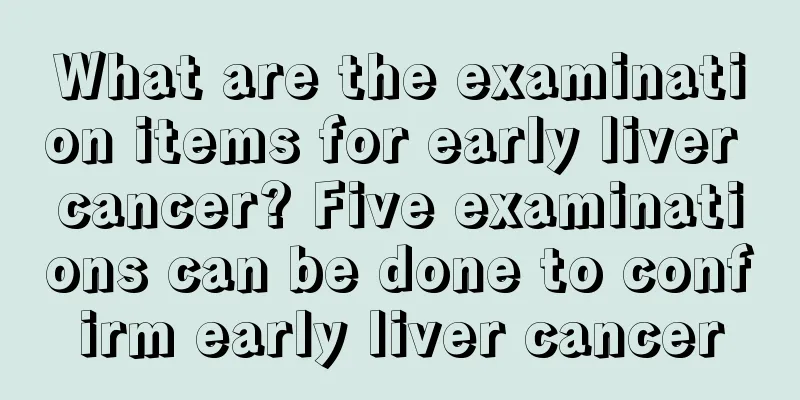Will cervical precancerous lesions definitely turn into cancer? 4 causes of cervical precancerous lesions

|
In recent years, people have begun to develop a strong interest in an unfamiliar term, namely CIN. What is CIN? CIN is the abbreviation of cervical intraepithelial neoplasia. Cervical intraepithelial neoplasia is one of the cervical diseases and a group of precancerous lesions closely related to the onset of cervical cancer. It can reflect the continuous development process of cervical cancer and become the basis for early detection, early diagnosis and early treatment of cervical cancer; it can also be used to observe the efficacy and estimate the prognosis. Since CIN is a precancerous lesion of the cervix? Will patients with CIN get cervical cancer? Everything has the potential to develop in different directions, and CIN is not just developing in the direction of cervical cancer. If there is a CIN, it is caused by a viral infection and can usually resolve on its own; another one is not only caused by a viral infection, but also has other complex reasons, and it has the potential for cancer. What is the cause? What about CIN? In fact, the cause is very complicated and may not be caused by a single factor. The following situations increase the risk of CIN: such as smoking; premature sexual life; sexual behavior; cervical erosion, laceration, eversion and viral infection. HPV (human papillomavirus) infection is the most common. From previous research results, it can be seen that about 90% of CIN patients have been infected with HPV. Of course, HPV is also divided into many types, and not all people infected with HPV will definitely cause CIN, because some viruses only cause genital condyloma acuminatum and rarely cause CIN. So we must be clear that whether it is cervicitis or HPV infection, we must go to the hospital and never be careless. CIN is different from cervical erosion, and its clinical symptoms are not obvious. Some patients may only have increased leucorrhea, watery and smelly, while some patients may only have contact bleeding. Therefore, if you want to find out whether you have got it CIN earlier, you can't go to the hospital after the symptoms appear, and you should go to the hospital regularly for gynecological examinations, such as TCT examinations. For those who do not have cervical disease and discomfort symptoms, TCT examinations should be performed at least once a year; patients with cervical erosion and contact bleeding should have TCT examinations at least twice a year. Patients with CIN who have been treated systematically should undergo TCT every three months under the close observation of a doctor. Colposcopy is the simplest and most effective way to detect the disease early. CIN may be a precancerous lesion, and its development can be completely blocked after treatment. Therefore, the state has introduced routine treatment to guide the medical behavior of clinical medical staff. It can be seen that CIN is not cervical cancer, and having CIN is not terrible. Correct examination and effective treatment will definitely restore your body to health. |
>>: What is cervical cancer? Four common symptoms of cervical precancerous lesions
Recommend
What organs are on the left side of the abdomen?
The structure of the human body is very complex, ...
What's wrong with my butt hurting
In people's daily lives, many people suffer f...
Don't rub these areas hard when taking a bath
Taking a bath is something that everyone must do,...
Traditional Chinese medicine remedy for clearing heat and detoxifying lung cancer
Because lung cancer patients have lesions in the ...
What are the early symptoms of uterine cancer
Uterine cancer is a gynecological tumor disease w...
What is the swelling rate of bird's nest
The swelling rate is also called the swelling hea...
Uncover 9 secrets of the digestive tract
If you think that the digestive tract is just a s...
What is the reason for dizziness when getting up in the morning
Many people have experienced dizziness, especiall...
What diseases can lymphoma cause and how to care for them
No matter what kind of disease you have, big or s...
What are the treatments for lung cancer? The 4 best treatments for lung cancer
If you have early lung cancer, timely treatment, ...
What is the effective treatment for roseola?
Pityriasis rosea is common in young or middle-age...
The urine is a bit cloudy
If you feel that your urine is a little turbid, g...
What are the symptoms of neck lymphoma
Lymphoma is a very stubborn disease, and most of ...
Introduce the causes of cervical cancer patients
Cervical cancer is a common malignant tumor of th...
There are generally two auxiliary examination methods for esophageal cancer
In addition to some conventional examination meth...









